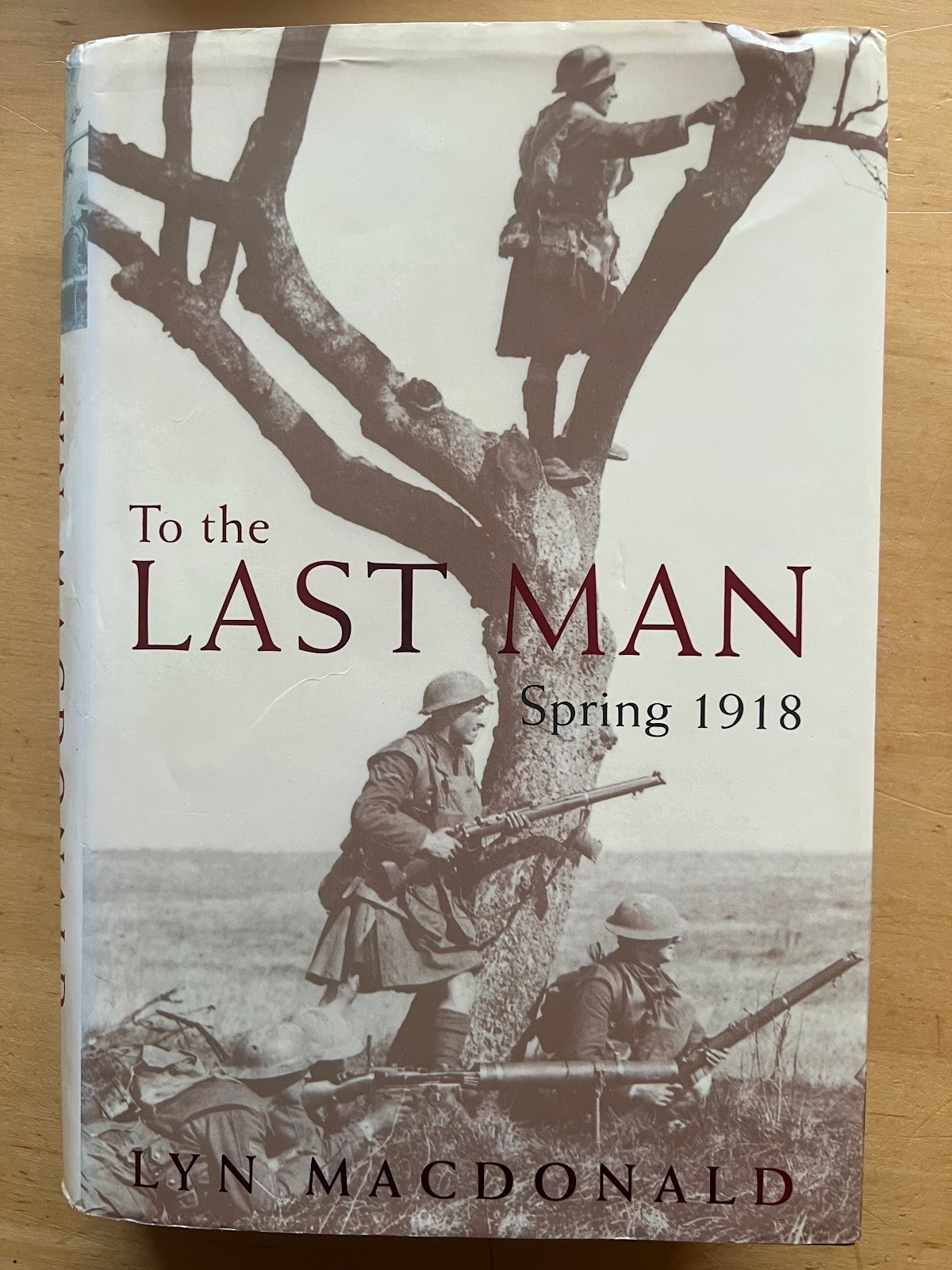Lyn McDonald | To The Last Man, Spring 1918 (Viking 1998)
A description of the the German offensive in March and April 1918 quoting eyewitness accounts. Some of these eyewitnesses fight in several different locations at different times and it is this movement which gives the book its strength.
Most of the accounts quoted are British and so what we have is a description of the British (and French) reaction to the German offensive, unlike Martin Middlebrook's "The Kaiser's Battle" (Allen Lane 1978) which describes the opening day of the offensive using both British and German accounts.
The book does not explain the context of the actions described. The British had introduced a new defensive system of outpost, battle and reserve zones. Understanding how this worked and the problems experienced by the British Fifth Army are critical to understanding what is being described and its significance. I noticed only occasional references to individual zones. The reduction of British divisions from 12 to 9 battalions and the take over of a large sector of inadequate French trenches by the Fifth Army are mentioned in passing.
There are many maps in the book but they describe the (relative) location of eyewitnesses or tactical actions. The location of corps and dvisions is not identified. As a result I was unable to understand sentences such as “but the Fifth Army held everywhere except for the 18th Division”.
The book is a useful source of tactical scenarios. The scenario“Then the man with the Flak said ‘Everyone Attack’ ..” in Stout Hearts & Iron Troopers is based on one such action.
In the final third of the book the text become lttle more than linked eyewitness accounts. This accentuated the confusion and lack of context to the point that I stopped reading the book: the literary equivalent of loosing the will to fight and surrendering.

No comments:
Post a Comment